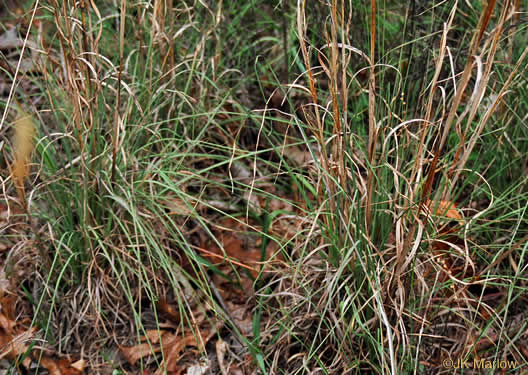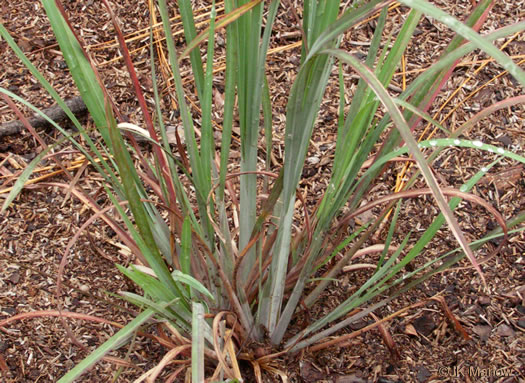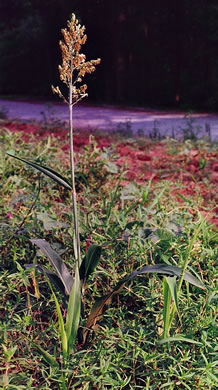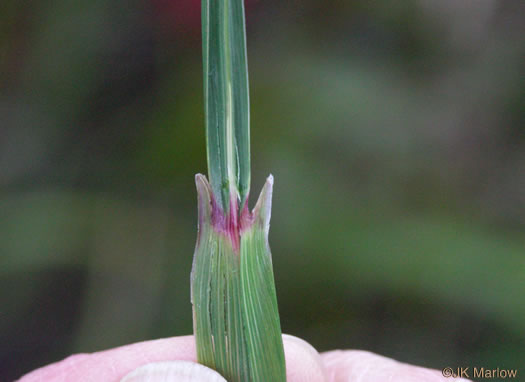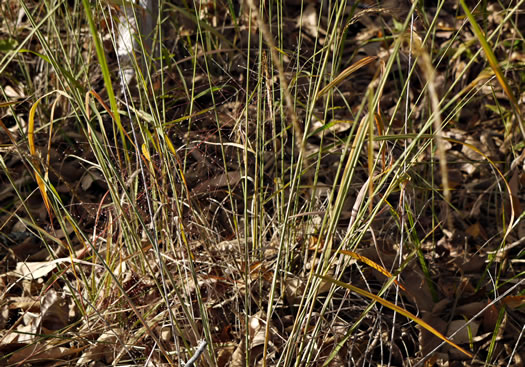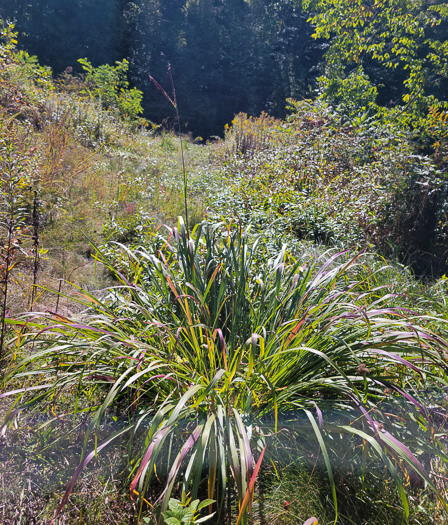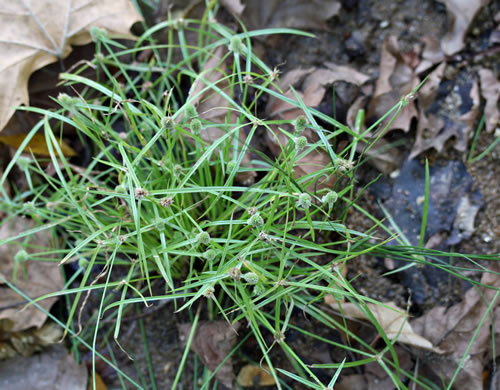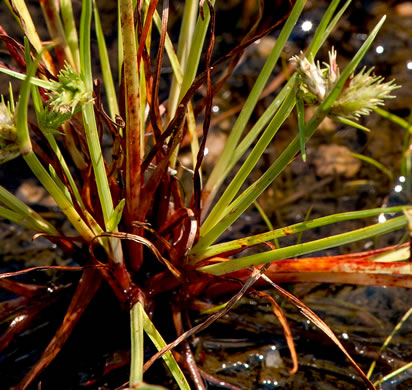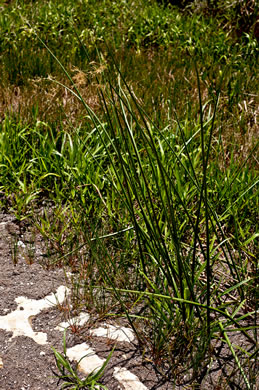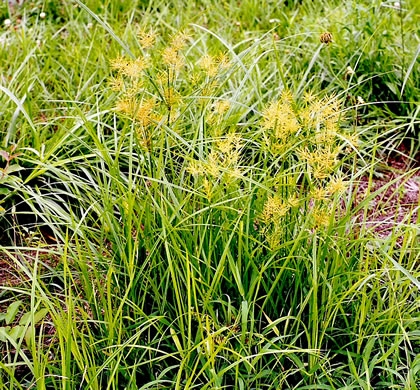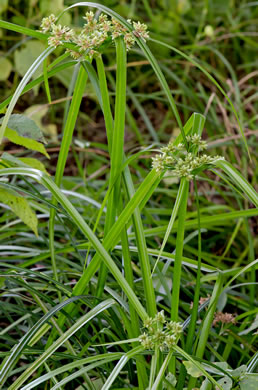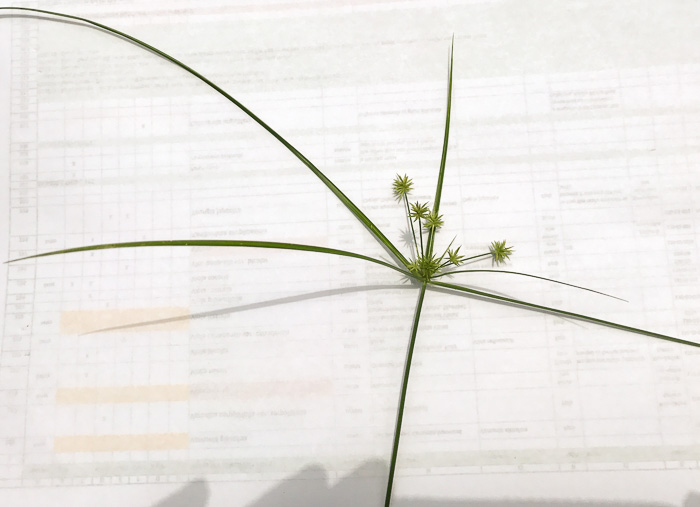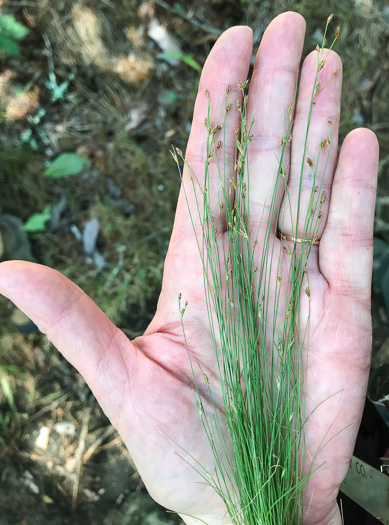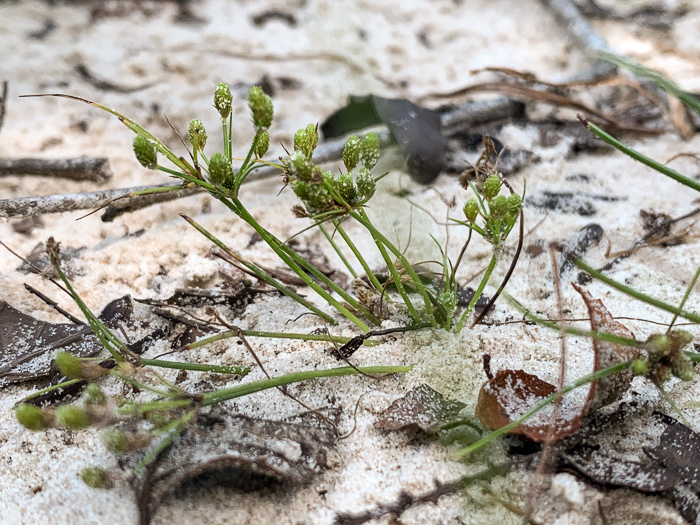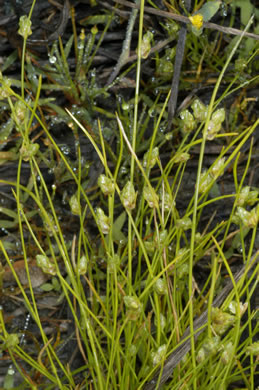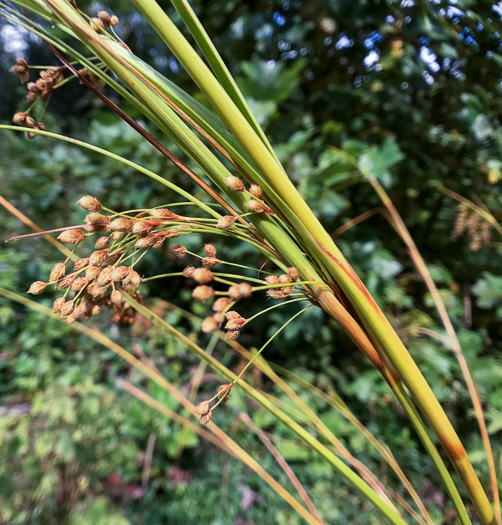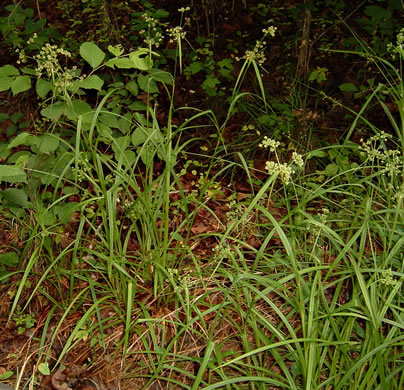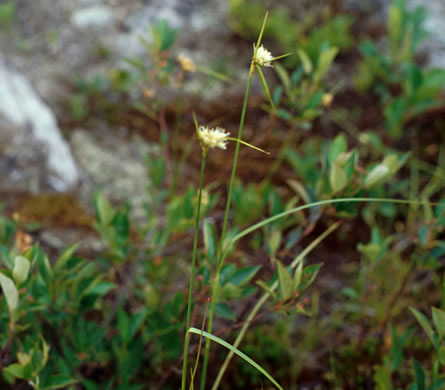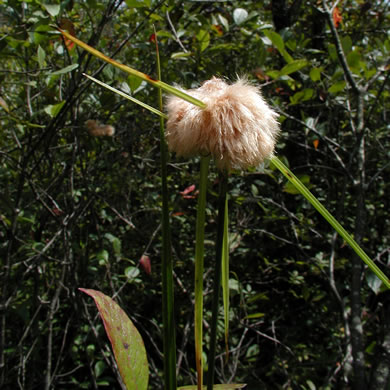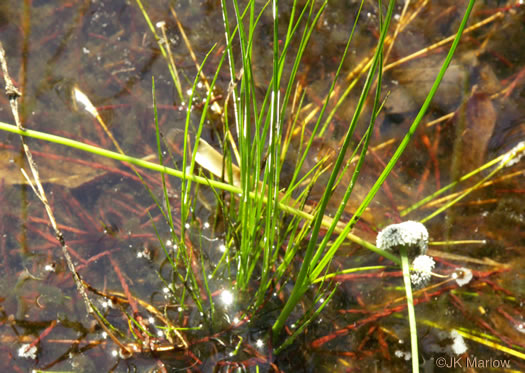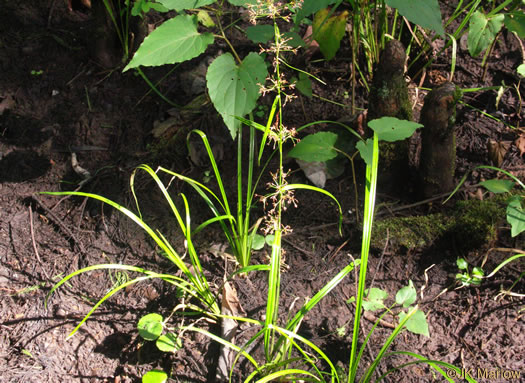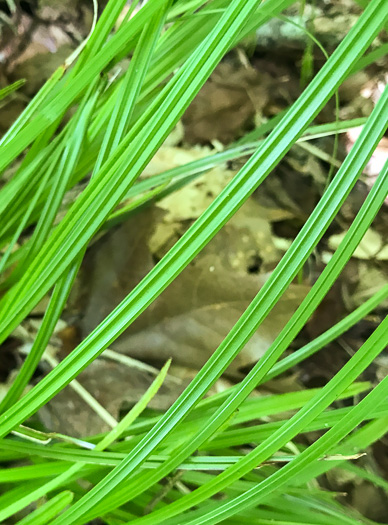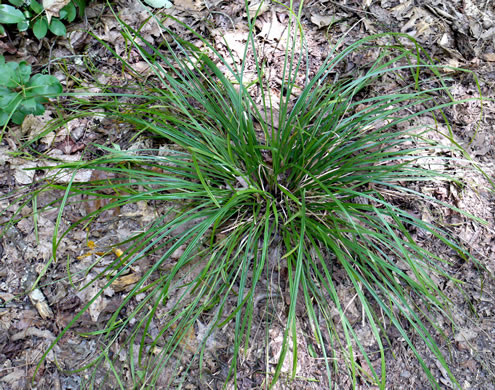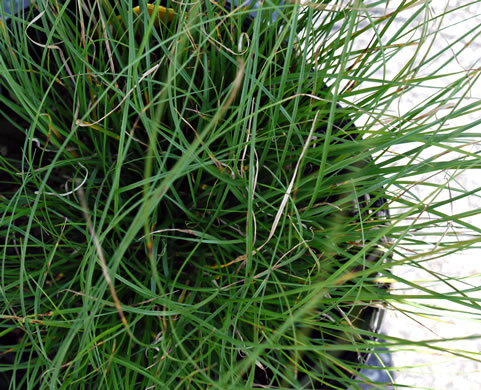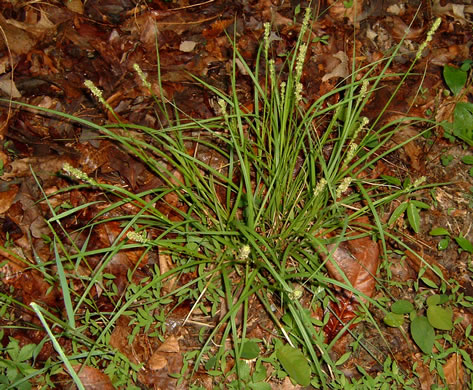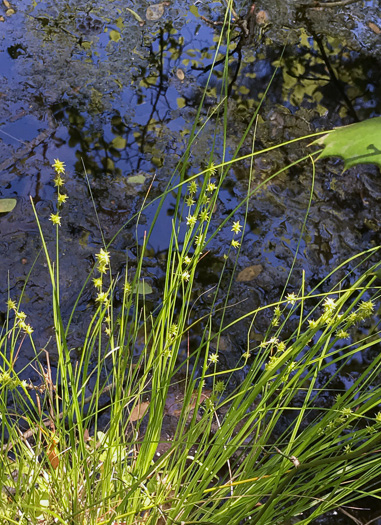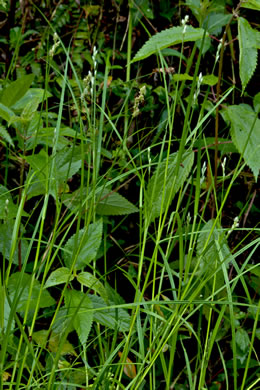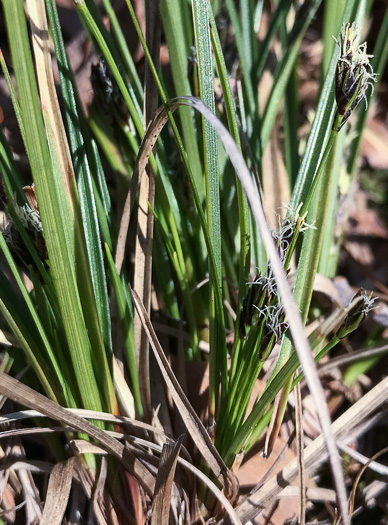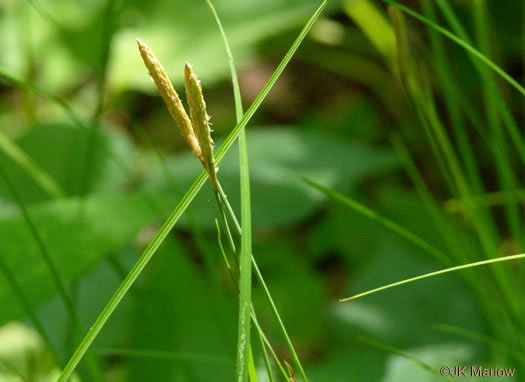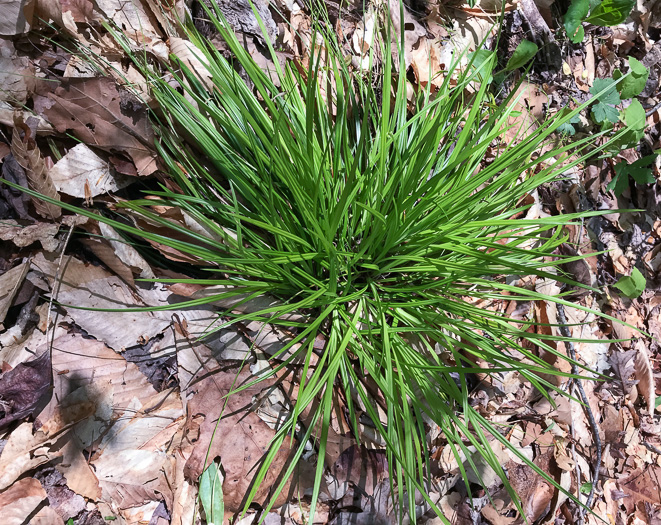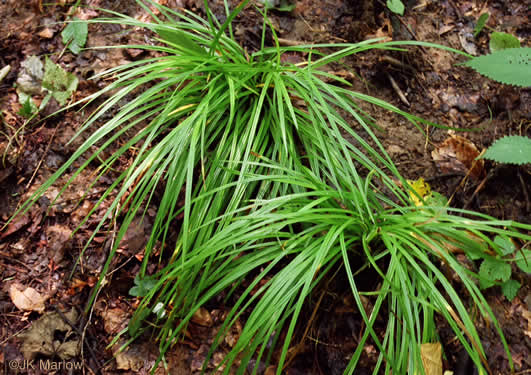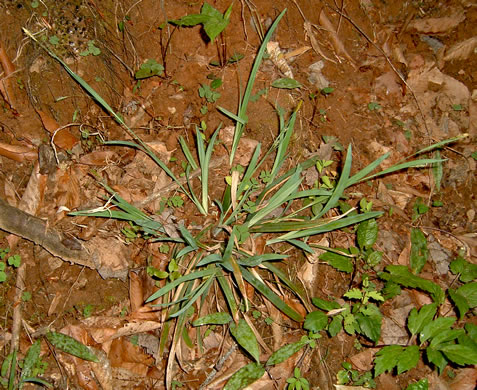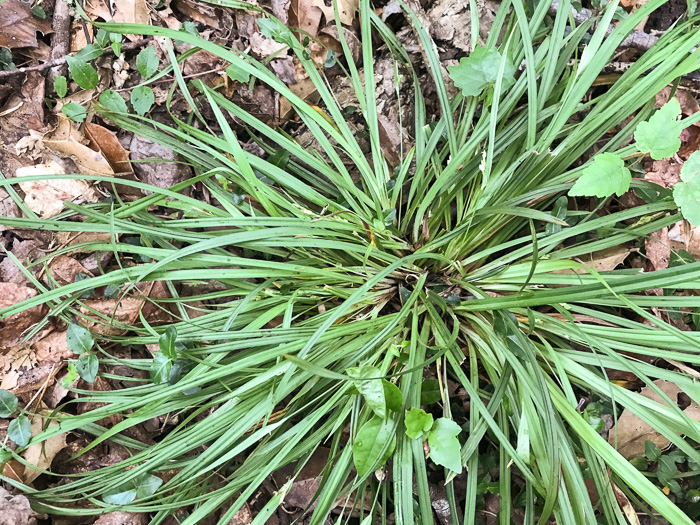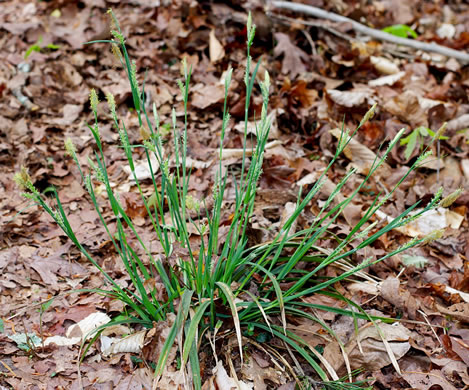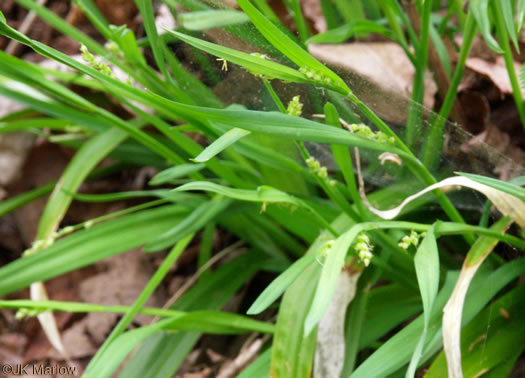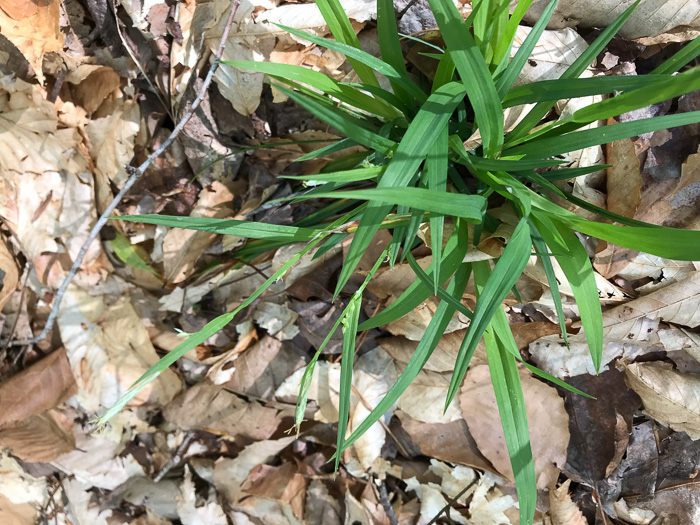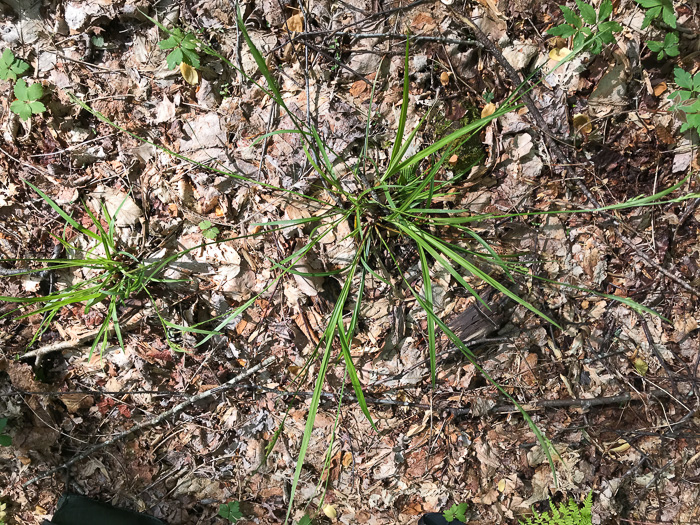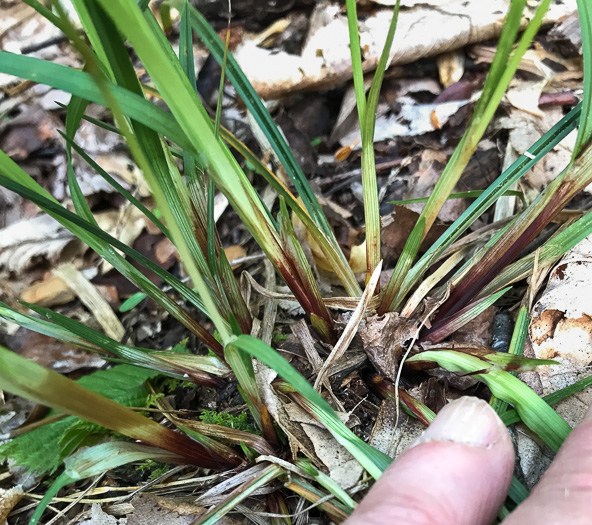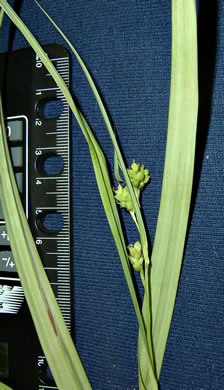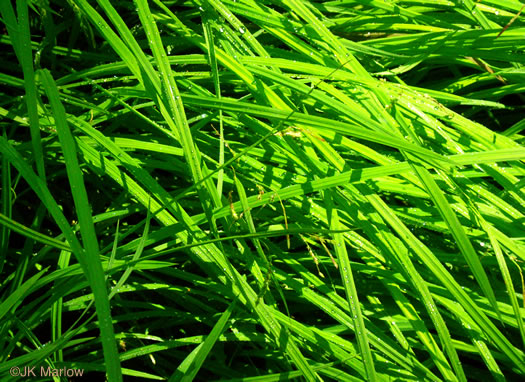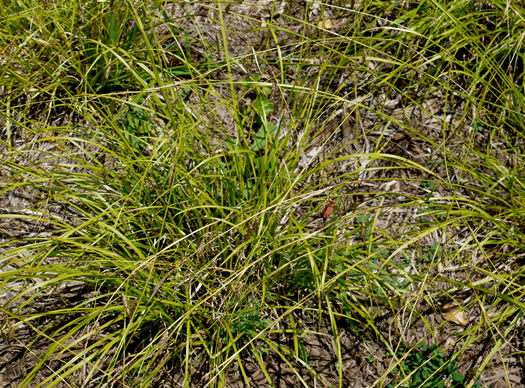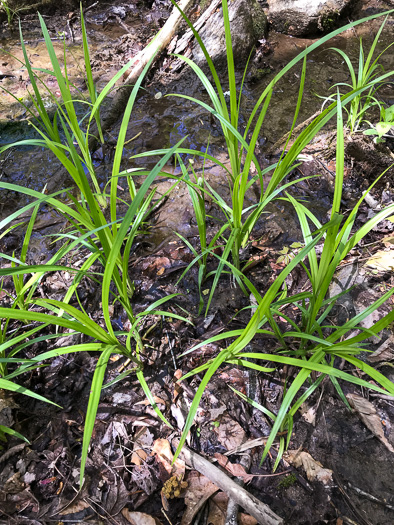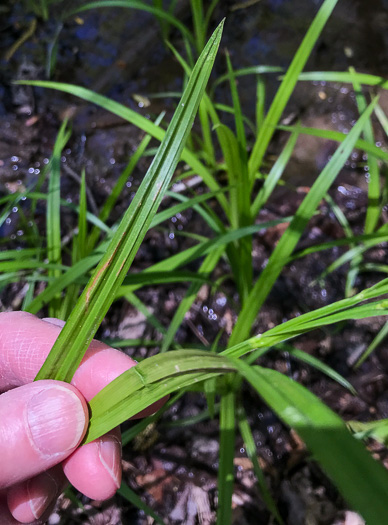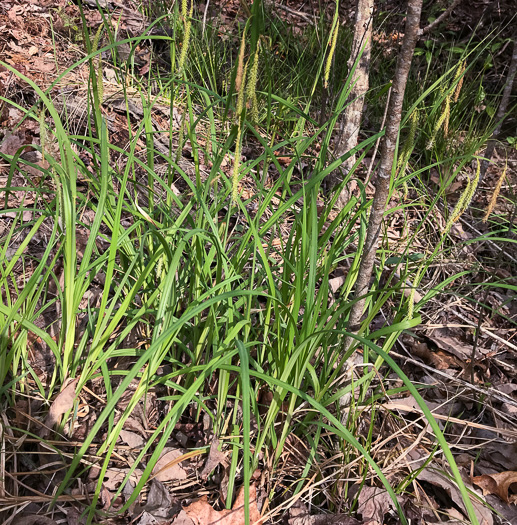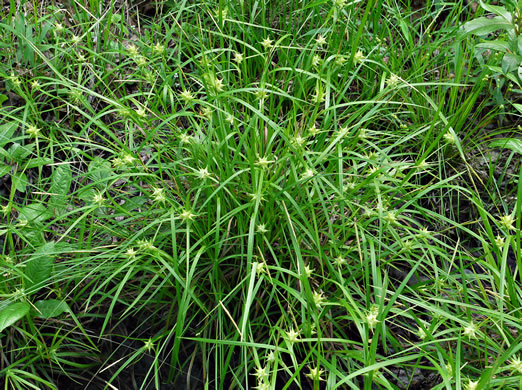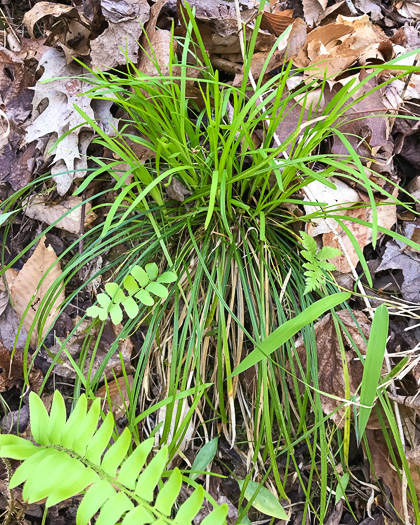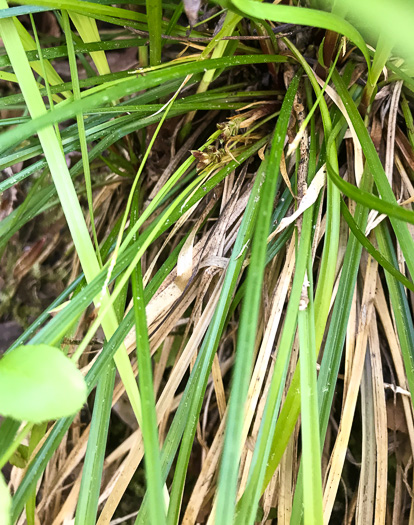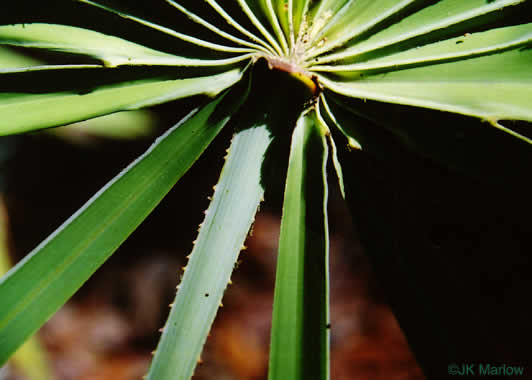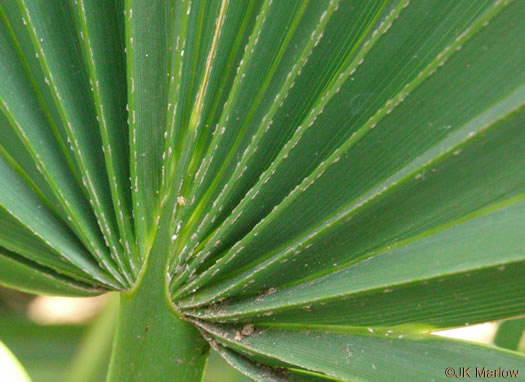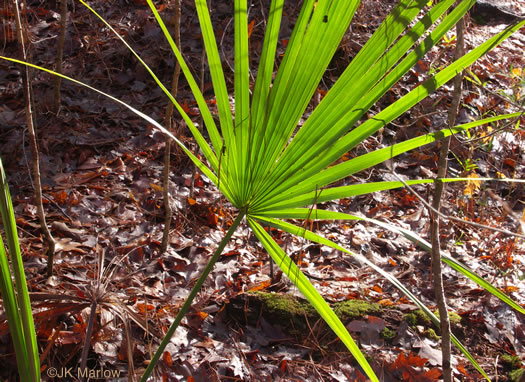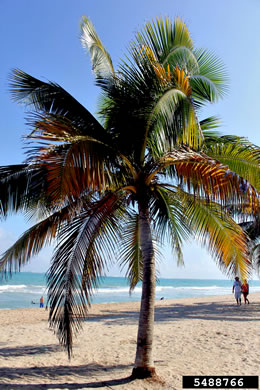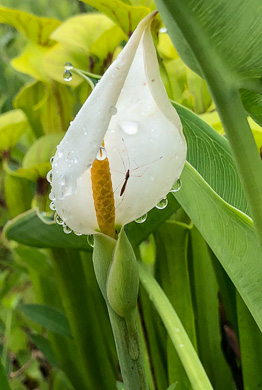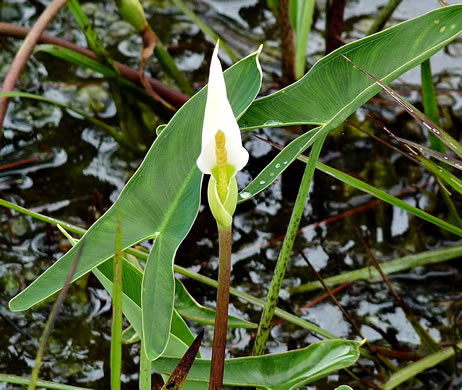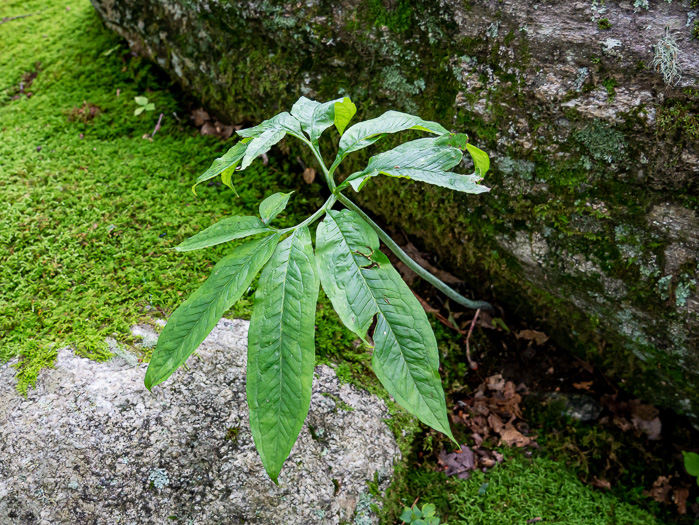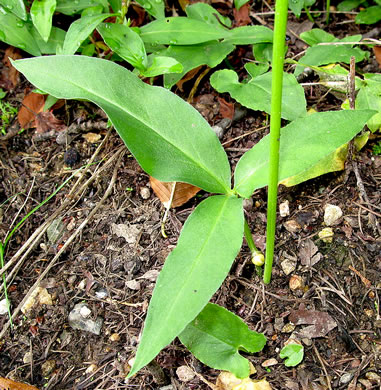Your search found 493 image(s) illustrating the term "blade." For a written explanation, click on "blade" in the Glossary.
PAGE 1 PAGE 2 PAGE 3 PAGE 4 PAGE 5 PAGE 6 PAGE 7 PAGE 8 PAGE 9
To see larger pictures, click or hover over the thumbnails.
To go to the plant's detail page, click its name.
 Broomsedge,
Anatherum virginicum var. virginicum
Broomsedge,
Anatherum virginicum var. virginicum
Leaf blades flat or folded, 2-5mm wide, pilose on upper surface toward base, per Manual of the Grasses of the United States (Hitchcock & Chase, 1950).
 Dryland White Bluestem,
Anatherum capillipes
Dryland White Bluestem,
Anatherum capillipes
Culm sheaths & leaf blades of Andropogon capillipes, A. dealbatus & A. cretaceus strongly glaucous, per Weakley's Flora (2025).
 Sorghum,
Sorghum bicolor ssp. bicolor
Sorghum,
Sorghum bicolor ssp. bicolor
Used for forage, its sweet juice, brooms, etc. Leaf blades to 5cm wide, per Manual of the Grasses of the United States (Hitchcock & Chase, 1950).
 Yellow Indiangrass,
Sorghastrum nutans
Yellow Indiangrass,
Sorghastrum nutans
Note auricled sheaths and narrow flat blades, per Manual of the Grasses of the United States (Hitchcock & Chase, 1950).
 Elliot's Indiangrass,
Sorghastrum elliottii
Elliot's Indiangrass,
Sorghastrum elliottii
Culms more slender than S. nutans, without rhizomes, blades narrower, per Manual of the Grasses of the United States (Hitchcock & Chase, 1950).
 Gama Grass,
Tripsacum dactyloides var. dactyloides
Gama Grass,
Tripsacum dactyloides var. dactyloides
Leaves largely basal and on lower half of stem, blades to 60 x 3cm, per Wildflowers of the Eastern United States (Duncan & Duncan, 1999).
 Annual Greenhead Sedge,
Cyperus hortensis
Annual Greenhead Sedge,
Cyperus hortensis
Usually 3 bracts, to 15cm long, 0.5-3mm wide. Leaf blades 1-3mm wide, per Vascular Flora of the Carolinas (Radford, Ahles, & Bell, 1968).
 Granite Flatsedge,
Cyperus granitophilus
Granite Flatsedge,
Cyperus granitophilus
Leaf blades strongly keeled, sheaths reddish, per Vascular Flora of the Carolinas (Radford, Ahles, & Bell, 1968).
 jointed flatsedge,
Cyperus articulatus
jointed flatsedge,
Cyperus articulatus
Blades flattish, absent or to 2cm long; leaves usually just a loose sheath, per Vascular Flora of the Carolinas (Radford, Ahles, & Bell, 1968).
 Yellow Nutsedge,
Cyperus esculentus var. leptostachyus
Yellow Nutsedge,
Cyperus esculentus var. leptostachyus
Leaf blades 2-10mm wide. Bracts 3-7, 2-10mm wide, per Vascular Flora of the Carolinas (Radford, Ahles, & Bell, 1968).
 Poorland Flatsedge,
Cyperus compressus
Poorland Flatsedge,
Cyperus compressus
Leaf blades 1-2mm wide. Bracts 2-5,1-2mm wide, per Vascular Flora of the Carolinas (Radford, Ahles, & Bell, 1968).
 Green Flatsedge,
Cyperus virens
Green Flatsedge,
Cyperus virens
Leaf blades and inflorescence bracts with conspicuous crossveins, per Weakley's Flora (2015).
 Baldwin's Flatsedge,
Cyperus croceus
Baldwin's Flatsedge,
Cyperus croceus
Bracts similar to leaf blades, per Vascular Flora of the Carolinas (Radford, Ahles, & Bell, 1968).
 Densetuft Hairsedge,
Bulbostylis capillaris ssp. capillaris
Densetuft Hairsedge,
Bulbostylis capillaris ssp. capillaris
Leaf blades filiform, 0.5mm wide, involute, margins ciliate-scabrid, surface glabrous, per Flora of North America.
 Ware's Hairsedge,
Bulbostylis warei
Ware's Hairsedge,
Bulbostylis warei
Leaves 1/2 length of culms; blades narrowly linear, 0.7-1mm wide, per Flora of North America.
 Harper's Fimbry,
Fimbristylis perpusilla
Harper's Fimbry,
Fimbristylis perpusilla
Plants diminuitive; leaf blades < 1mm wide; inflorescence bracts 1-2 cm long, per Weakley's Flora (2020).
 Deerhair Bulrush,
Trichophorum cespitosum
Deerhair Bulrush,
Trichophorum cespitosum
Culms 20-50cm tall, densely ribbed. Blades absent or to 1cm long, per Vascular Flora of the Carolinas (Radford, Ahles, & Bell, 1968).
 Keeled Bulrush,
Isolepis carinata
Keeled Bulrush,
Isolepis carinata
Culms 6-20cm tall, coarsely ribbed. Blades to 20cm long, 0.5-1mm wide, per Vascular Flora of the Carolinas (Radford, Ahles, & Bell, 1968).
 Woodland Bulrush,
Scirpus expansus
Woodland Bulrush,
Scirpus expansus
Inflorescence decompound; bracts numerous, similar to blades, per Vascular Flora of the Carolinas (Radford, Ahles, & Bell, 1968).
 Woodland Bulrush,
Scirpus expansus
Woodland Bulrush,
Scirpus expansus
Leaf blades septate, to 6dm long, 6-20mm wide; sheaths purplish, per Vascular Flora of the Carolinas (Radford, Ahles, & Bell, 1968).
 Georgia Bulrush,
Scirpus georgianus
Georgia Bulrush,
Scirpus georgianus
Coarse tufted perennial from short, thick rhizomes. Blade tips 3-angled, per Vascular Flora of the Carolinas (Radford, Ahles, & Bell, 1968).
 Tawny Cottongrass,
Eriophorum virginicum
Tawny Cottongrass,
Eriophorum virginicum
Leaf blades glabrous, 2-4mm wide, per Vascular Flora of the Carolinas (Radford, Ahles, & Bell, 1968).
 Tawny Cottongrass,
Eriophorum virginicum
Tawny Cottongrass,
Eriophorum virginicum
Involucral bracts usually 3, similar to leaf blades, per Vascular Flora of the Carolinas (Radford, Ahles, & Bell, 1968).
 Harper's Beaksedge,
Rhynchospora harperi
Harper's Beaksedge,
Rhynchospora harperi
Principal leaf blades narrowly linear, no wider than 2 mm, per Flora of North America.
 Millet Beaksedge,
Rhynchospora miliacea
Millet Beaksedge,
Rhynchospora miliacea
Leaves exceeded by culms, blades flat, 4-7(-10)mm wide, per Flora of North America.
 Few-flowered Nutrush,
Scleria oligantha
Few-flowered Nutrush,
Scleria oligantha
Leaf blades linear, ribbed, shorter than or equaling culms, 2-6mm wide, per Flora of North America.
 Tall Nutrush,
Scleria triglomerata
Tall Nutrush,
Scleria triglomerata
Leaves hairless, grasslike, upper leaf blades folded and keeled, per Forest Plants of the Southeast and Their Wildlife Uses (Miller & Miller, 2005).
 Appalachian Sedge,
Carex appalachica
Appalachian Sedge,
Carex appalachica
Leaf blades 0.5-2.5mm wide, sheaths tight, per Vascular Flora of the Carolinas (Radford, Ahles, & Bell, 1968).
 Yellow-fruited Sedge,
Carex annectens
Yellow-fruited Sedge,
Carex annectens
Leaf blades shorter than flowering stem, sheath fronts indistinctly spotted, per Flora of North America.
 Prickly Bog Sedge,
Carex atlantica
Prickly Bog Sedge,
Carex atlantica
Leaf blades 1.5-3mm wide. Spikes more than 1 per culm, per Vascular Flora of the Carolinas (Radford, Ahles, & Bell, 1968).
 Long's Sedge,
Carex longii
Long's Sedge,
Carex longii
Stems 3-8dm tall, much exceeding leaves. Principal leaf blades 2-4mm wide, per Aquatic and Wetland Plants of Southeastern United States (Godfrey & Wooten, 1979 & 1981).
 Parasol Sedge,
Carex umbellata
Parasol Sedge,
Carex umbellata
Leaf blades 10-20cm long, 1-3mm wide, per Vascular Flora of the Carolinas (Radford, Ahles, & Bell, 1968).
 Black-edged Sedge,
Carex nigromarginata
Black-edged Sedge,
Carex nigromarginata
Leaf blades green, greatly exceeding culms, 1.4-4mm wide, per Flora of North America.
 Wood's Sedge,
Carex woodii
Wood's Sedge,
Carex woodii
Culms [flowering stems] slender, 30-50cm tall. Leaf blades 1.5-2mm wide, per Vascular Flora of the Carolinas (Radford, Ahles, & Bell, 1968).
 South Carolina Sedge,
Carex austrocaroliniana
South Carolina Sedge,
Carex austrocaroliniana
Leaves: basal sheaths purple; blades erect, ascending, or decumbent, green, per Flora of North America.
 South Carolina Sedge,
Carex austrocaroliniana
South Carolina Sedge,
Carex austrocaroliniana
Widest leaf blade 3-6mm wide, per Weakley's Flora (2015).
 Spreading Sedge,
Carex laxiculmis
Spreading Sedge,
Carex laxiculmis
Leaf blades erect, ascending, or spreading, usually glaucous, per Flora of North America.
 Thicket Sedge,
Carex abscondita
Thicket Sedge,
Carex abscondita
Leaf blades dark green to grayish blue-green, usually exceeding culms, per Flora of North America.
 Lined Sedge,
Carex striatula
Lined Sedge,
Carex striatula
Leaf blades coriaceous, glaucous, 3-8mm wide, per Vascular Flora of the Carolinas (Radford, Ahles, & Bell, 1968).
 Broad Loose-flowered Sedge,
Carex laxiflora
Broad Loose-flowered Sedge,
Carex laxiflora
Culms 30-50cm tall, narrowly wing-angled. Blades 2.5-15mm wide, per Vascular Flora of the Carolinas (Radford, Ahles, & Bell, 1968).
 Broad Loose-flowered Sedge,
Carex laxiflora
Broad Loose-flowered Sedge,
Carex laxiflora
Leaf blades ascending, midrib and 2 lateral veins developed, occasionally slightly corrugated, per Flora of North America.
 Blue Ridge Purple Sedge,
Carex manhartii
Blue Ridge Purple Sedge,
Carex manhartii
Mature leaf blades of sterile shoots 4-5 (-6) mm wide, green, per Weakley's Flora (2022).
 Blue Ridge Purple Sedge,
Carex manhartii
Blue Ridge Purple Sedge,
Carex manhartii
Basal sheaths reddish purple, lustrous; sheaths 5-40 mm; blades green, midrib well developed, per Flora of North America.
 Meadow Sedge,
Carex flaccosperma
Meadow Sedge,
Carex flaccosperma
Leaf blades glaucous, widest blades 6.3-14.7 mm wide, per Flora of North America.
 Necklace Sedge,
Carex prasina
Necklace Sedge,
Carex prasina
Leaf blades glabrous, 2-4mm wide, per Vascular Flora of the Carolinas (Radford, Ahles, & Bell, 1968).
 Cherokee Sedge,
Carex cherokeensis
Cherokee Sedge,
Carex cherokeensis
Leaf blades 4-5mm wide; sheaths brownish, glabrous, per Vascular Flora of the Carolinas (Radford, Ahles, & Bell, 1968).
 Eastern Rough Sedge,
Carex scabrata
Eastern Rough Sedge,
Carex scabrata
Widest leaf blades 8-23mm wide, septate-nodulose [w transverse partitions that wrinkle when dry], per Weakley's Flora (2025).
 Eastern Rough Sedge,
Carex scabrata
Eastern Rough Sedge,
Carex scabrata
Widest leaf blades M-shaped in xs when young, 2 marginal veins more prominent above than midvein, per Weakley's Flora (2025).
 Mountain Fringed Sedge,
Carex gynandra
Mountain Fringed Sedge,
Carex gynandra
Leaf blades not involute, 12-55cm × 4-10.5mm, per Flora of North America.
 Bladder Sedge,
Carex intumescens var. intumescens
Bladder Sedge,
Carex intumescens var. intumescens
Culms 30-60cm tall; blades 2-6mm wide, per Vascular Flora of the Carolinas (Radford, Ahles, & Bell, 1968).
 Longstalk Sedge,
Carex pedunculata
Longstalk Sedge,
Carex pedunculata
Leaves: basal sheaths dark reddish to purplish brown; blades mostly basal, dark green, per Flora of North America.
 Longstalk Sedge,
Carex pedunculata
Longstalk Sedge,
Carex pedunculata
Leaf blades equaling or mostly exceeding culms, 1.4-4 mm wide, thick, margins smooth or scabrous, per Flora of North America.
 Saw Palmetto,
Serenoa repens
Saw Palmetto,
Serenoa repens
Petiole ends abruptly in the blade base, per Trees of the Southeastern United States (Duncan & Duncan, 1988).
 Dwarf Palmetto,
Sabal minor
Dwarf Palmetto,
Sabal minor
Leaf blades without a midrib, per Native Shrubs and Woody Vines of the Southeast (Foote & Jones, 1989).
 Dwarf Palmetto,
Sabal minor
Dwarf Palmetto,
Sabal minor
Blade usually divided medially, a long V-shaped gap between the two halves, per Trees, Shrubs, and Woody Vines of Northern Florida and Adjacent Georgia and Alabama (Godfrey, 1988).
 Coconut Palm,
Cocos nucifera
Coconut Palm,
Cocos nucifera
Leaves pinnate (w well-developed central axis, blade much longer than wide), per Weakley's Flora (2015).
 White Arrow-arum,
Peltandra sagittifolia
White Arrow-arum,
Peltandra sagittifolia
Spathe tube light green inside & out, closed; spathe blade white, widely open, per Flora of North America.
 White Arrow-arum,
Peltandra sagittifolia
White Arrow-arum,
Peltandra sagittifolia
Leaf blade smaller on average and less variable in shape than P. virginica, per Flora of North America.
 Green Dragon,
Arisaema dracontium
Green Dragon,
Arisaema dracontium
The leafstalk terminates in the center of a single, compound, curving blade, per Atlantic Coastal Plain Wildflowers (Nelson, 2006).
 Pinellia,
Pinellia ternata
Pinellia,
Pinellia ternata
Leaf blade 3-foliolate, sometimes pedate w 5 leaflets. Bulbils present, per Flora of China.

